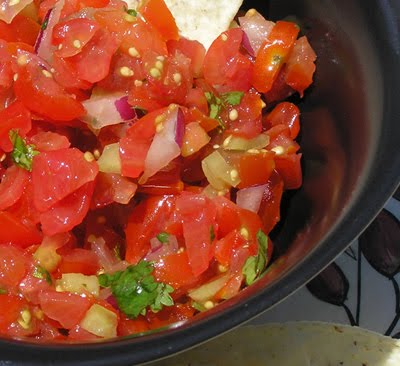
We did it!
Stay tuned for more information on how you can vote and help us spread the word.
Forget food miles. Get sky high salsa.
 During my last year at school I had the privilege of taking a class titled Prices, Property, and the Problem of the Commons: An analysis of water resources and fisheries economics. Throughout the course we covered topics ranging from the Three Gorges Dam in China to certain lobster harvesting methods in practice in Maine. It was a fantastic course that taught me a lot, but if I had to sum everything up in one sentence it breaks down to the fact that our oceans are severely strained and we drastically need to change the way we think about fishing if demand for seafood continues on its current path.
During my last year at school I had the privilege of taking a class titled Prices, Property, and the Problem of the Commons: An analysis of water resources and fisheries economics. Throughout the course we covered topics ranging from the Three Gorges Dam in China to certain lobster harvesting methods in practice in Maine. It was a fantastic course that taught me a lot, but if I had to sum everything up in one sentence it breaks down to the fact that our oceans are severely strained and we drastically need to change the way we think about fishing if demand for seafood continues on its current path.
 Who said rooftop farming was limited solely to the cultivation of fruits and vegetables? Vancouver surely didn't. As part of its stride to be the greenest city in the world Vancouver is moving ahead with the demonstration of two beehives on the roof of its City Hall. More than 60,000 bees already call the city's Convention Center home, which boasts four beehives on its 2.4 hectare green roof. Numerous other hives have also been established for some time at the University of British Columbia, Science World, and VanDusen Botanical Garden. This most recent introduction, however, comes as part of the city's plan to increase local food production by way of an increase in urban gardens. And of course, no pollinators are more prominent in Canada than the honeybee.
Who said rooftop farming was limited solely to the cultivation of fruits and vegetables? Vancouver surely didn't. As part of its stride to be the greenest city in the world Vancouver is moving ahead with the demonstration of two beehives on the roof of its City Hall. More than 60,000 bees already call the city's Convention Center home, which boasts four beehives on its 2.4 hectare green roof. Numerous other hives have also been established for some time at the University of British Columbia, Science World, and VanDusen Botanical Garden. This most recent introduction, however, comes as part of the city's plan to increase local food production by way of an increase in urban gardens. And of course, no pollinators are more prominent in Canada than the honeybee. Whichever the cause, one thing is certain. Bees raised in urban settings have found much more success than their countryside counterparts over the past few years, mainly due to the absence of pesticides and consistent rotation of flowers and plants within the city. In Paris, bee hives have been sprouting up all over the city's rooftops, gardens, balconies, and parks in an effort to preserve the precious pollinator, with more than 300 registered hives now in the city. The Opéra Garnier is home to more than 140,000 bees alone. Additionally, these city dwellers could produce up to five times the output of those limited to single crops in rural areas, while also losing less than 5% of their colonies on a year over year basis compared to the 50% colony losses experienced in the countryside.
Whichever the cause, one thing is certain. Bees raised in urban settings have found much more success than their countryside counterparts over the past few years, mainly due to the absence of pesticides and consistent rotation of flowers and plants within the city. In Paris, bee hives have been sprouting up all over the city's rooftops, gardens, balconies, and parks in an effort to preserve the precious pollinator, with more than 300 registered hives now in the city. The Opéra Garnier is home to more than 140,000 bees alone. Additionally, these city dwellers could produce up to five times the output of those limited to single crops in rural areas, while also losing less than 5% of their colonies on a year over year basis compared to the 50% colony losses experienced in the countryside.




